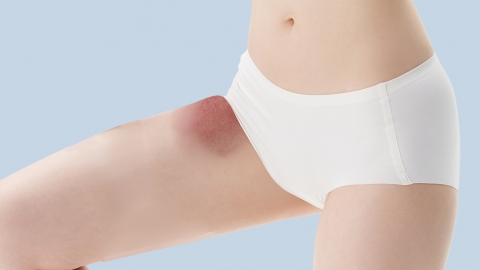What could be the cause of a needle-like pain on the inner side of the left thigh?
Under normal circumstances, the main causes of needle-like pain on the inner side of the left thigh include muscle strain, local cold exposure, femoral neuritis, inguinal lymphadenitis, and hip joint synovitis. If discomfort occurs, it is recommended to promptly visit a正规 hospital for diagnosis and treatment. Detailed analysis is as follows:

1. Muscle Strain
Intense physical activity or sudden leg lifting may cause tearing of muscle fibers on the inner thigh, stimulating nerves and resulting in needle-like pain that worsens with movement. Immediately stop strenuous exercise, elevate the left leg during rest, apply ice packs during the acute phase to relieve pain, and switch to heat application after 48 hours to promote recovery. Avoid excessive stretching of the injured muscle.
2. Local Cold Exposure
Inadequate leg warmth allows cold to invade the inner thigh muscles, causing blood vessel constriction, poor circulation, and nerve irritation leading to needle-like pain. Promptly add clothing to cover the legs, apply a hot water bottle to the painful area, drink warm water, and avoid prolonged exposure to cold environments.
3. Femoral Neuritis
Inflammation of the femoral nerve caused by viral infection, compression, or other factors leads to abnormal nerve conduction, resulting in needle-like pain on the inner thigh, often accompanied by numbness. Under medical guidance, medications such as mecobalamin tablets, vitamin B1 tablets, and acyclovir tablets may be taken. Avoid compressing the inner thigh and combine with local physical therapy to alleviate symptoms.
4. Inguinal Lymphadenitis
Infection from the lower limbs or perineal region spreads to the inguinal lymph nodes, triggering inflammation. The inflamed lymph nodes irritate surrounding tissues, causing radiating needle-like pain on the inner thigh, with palpable swollen lymph nodes. Under medical supervision, antibiotics such as cefuroxime axetil tablets, amoxicillin capsules, or levofloxacin tablets may be prescribed. Maintain local hygiene during treatment and avoid squeezing the lymph nodes.
5. Hip Joint Synovitis
Synovial inflammation of the hip joint triggered by trauma or infection results in inflammatory mediators irritating surrounding nerves, causing referred needle-like pain on the inner thigh, which intensifies with hip movement. Under medical guidance, medications such as celecoxib capsules, synovitis granules, or cefixime dispersible tablets may be used. In severe cases, arthroscopic synovectomy may be required. Avoid overloading the hip joint.
In daily life, ensure adequate warm-up before exercise to prevent muscle strain; maintain proper leg warmth to avoid cold exposure; keep the lower limbs clean to prevent infections; control hip joint activity to avoid excessive wear and tear; and rest promptly when pain occurs to prevent worsening symptoms.




